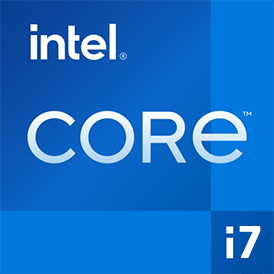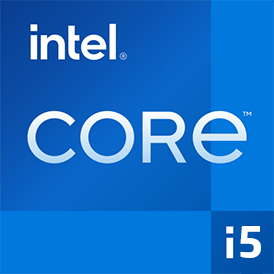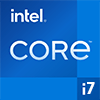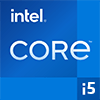
Intel Core i7-9750H vs Intel Core i5-3475S
Última actualización:
Comparación con puntos de referencia

|
 |

|
| Intel Core i7-9750H | Intel Core i5-3475S | |
Comparación de CPUIntel Core i7-9750H o Intel Core i5-3475S - ¿Qué procesador es más rápido? En esta comparativa nos fijamos en las diferencias y analizamos cuál de estas dos CPU es mejor. Comparamos los datos técnicos y los resultados de referencia.
El Intel Core i7-9750H tiene 6 núcleos con 12 hilos y relojes con una frecuencia máxima de 4,50 GHz. Se admiten hasta 128 GB de memoria en 2 canales de memoria. El Intel Core i7-9750H se publicó en Q2/2019. El Intel Core i5-3475S tiene 4 núcleos con 4 hilos y relojes con una frecuencia máxima de 3,60 GHz. La CPU admite hasta 32 GB de memoria en 2 canales de memoria. El Intel Core i5-3475S se publicó en Q2/2012. |
||
| Intel Core i7 (298) | Familia | Intel Core i5 (331) |
| Intel Core i 9000H (11) | Grupo de CPU | Intel Core i 3000 (31) |
| 9 | Generacion | 3 |
| Coffee Lake H Refresh | Arquitectura | Ivy Bridge S |
| Mobile | Segmento | Desktop / Server |
| Intel Core i7-8750H | Predecesor | -- |
| Intel Core i7-10750H | Sucesor | -- |
|
|
||
CPU Núcleos y frecuencia de baseEl Intel Core i7-9750H tiene 6 núcleos de CPU y puede calcular 12 subprocesos en paralelo. La frecuencia de reloj de Intel Core i7-9750H es 2,60 GHz (4,50 GHz) mientras que Intel Core i5-3475S tiene 4 núcleos de CPU y 4 hilos pueden calcularse simultáneamente. La frecuencia de reloj de Intel Core i5-3475S está en 2,90 GHz (3,60 GHz). |
||
| Intel Core i7-9750H | Característica | Intel Core i5-3475S |
| 6 | Nùcleos | 4 |
| 12 | Threads | 4 |
| normal | Arquitectura central | normal |
| Si | Hyperthreading | No |
| No | Overclocking ? | No |
| 2,60 GHz | Frecuencia | 2,90 GHz |
| 4,50 GHz | Turbo Frecuencia (1 Nùcleo) | 3,60 GHz |
| 3,20 GHz | Turbo Frecuencia (Todos Nùcleos) | -- |
Grafica internaEl Intel Core i7-9750H o Intel Core i5-3475S tiene gráficos integrados, llamados iGPU para abreviar. La iGPU usa la memoria principal del sistema como memoria gráfica y se ubica en la matriz del procesador. |
||
| Intel UHD Graphics 630 | GPU | Intel HD Graphics 4000 |
| 0,35 GHz | Frecuencia GPU | 0,65 GHz |
| 1,15 GHz | GPU (Turbo) | 1,10 GHz |
| 9.5 | GPU Generation | 7 |
| 14 nm | Tecnologia | 22 nm |
| 3 | Max. visualizaciones | 3 |
| 24 | Unidades de ejecución | 16 |
| 192 | Shader | 128 |
| No | Hardware Raytracing | No |
| No | Frame Generation | No |
| 64 GB | Max. GPU Memoria | 2 GB |
| 12 | DirectX Version | 11.0 |
Hardware codec supportUn códec de foto o video acelerado en hardware puede acelerar en gran medida la velocidad de trabajo de un procesador y prolongar la duración de la batería de las computadoras portátiles o los teléfonos inteligentes al reproducir videos. |
||
| Intel UHD Graphics 630 | GPU | Intel HD Graphics 4000 |
| Decodificar / Codificar | Codec h265 / HEVC (8 bit) | No |
| Decodificar / Codificar | Codec h265 / HEVC (10 bit) | No |
| Decodificar / Codificar | Codec h264 | Decodificar / Codificar |
| Decodificar / Codificar | Codec VP9 | No |
| Decodificar / Codificar | Codec VP8 | No |
| No | Codec AV1 | No |
| Decodificar / Codificar | Codec AVC | Decodificar / Codificar |
| Decodificar | Codec VC-1 | Decodificar |
| Decodificar / Codificar | Codec JPEG | Decodificar |
Memoria & PCIeEl Intel Core i7-9750H puede usar hasta 128 GB de memoria en 2 canales de memoria. El ancho de banda de memoria máximo es 42,7 GB/s. El Intel Core i5-3475S admite hasta 32 GB de memoria en 2 canales de memoria y logra un ancho de banda de memoria de hasta 25,6 GB/s. |
||
| Intel Core i7-9750H | Característica | Intel Core i5-3475S |
| DDR4-2666 | Memoria | DDR3-1600 |
| 128 GB | Max. Memoria | 32 GB |
| 2 (Dual Channel) | Canales de memoria | 2 (Dual Channel) |
| 42,7 GB/s | Max. Banda ancha | 25,6 GB/s |
| No | ECC | No |
| -- | L2 Cache | -- |
| 12,00 MB | L3 Cache | 6,00 MB |
| 3.0 | Versión PCIe | 3.0 |
| 16 | Lineas PCIe | 16 |
| 15,8 GB/s | PCIe Banda ancha | 15,8 GB/s |
Gestión térmicaLa potencia de diseño térmico (TDP para abreviar) del Intel Core i7-9750H es 45 W, mientras que el Intel Core i5-3475S tiene un TDP de 65 W. El TDP especifica la solución de enfriamiento necesaria que se requiere para enfriar el procesador lo suficiente. |
||
| Intel Core i7-9750H | Característica | Intel Core i5-3475S |
| 45 W | TDP (PL1 / PBP) | 65 W |
| -- | TDP (PL2) | -- |
| -- | TDP up | -- |
| 35 W | TDP down | -- |
| 100 °C | Tjunction max. | -- |
Detalles tecnicosEl Intel Core i7-9750H está fabricado en 14 nm y tiene 12,00 MB de caché. El Intel Core i5-3475S está fabricado en 22 nm y tiene una caché de 6,00 MB. |
||
| Intel Core i7-9750H | Característica | Intel Core i5-3475S |
| 14 nm | Tecnologia | 22 nm |
| Monolítico | Diseño de chips | Monolítico |
| x86-64 (64 bit) | Conjunto de instrucciones (ISA) | x86-64 (64 bit) |
| SSE4.1, SSE4.2, AVX2 | Extensiones ISA | SSE4.1, SSE4.2, AVX |
| BGA 1440 | Enchufe | LGA 1155 |
| VT-x, VT-x EPT, VT-d | Virtualización | VT-x, VT-x EPT |
| Si | AES-NI | Si |
| Windows 10, Windows 11, Linux | Sistemas operativos | Windows 10, Linux |
| Q2/2019 | Fecha de lanzamiento | Q2/2012 |
| 390 $ | Precio de lanzamiento | -- |
| mostrar más datos | mostrar más datos | |
Califica estos procesadores
Rendimiento medio en benchmarks
⌀ Rendimiento de un solo núcleo en 2 puntos de referencia de la CPU
⌀ Rendimiento multinúcleo en 3 puntos de referencia de la CPU
Geekbench 5, 64bit (Single-Core)
Geekbench 5 es un benchmark multi-plataforma que utiliza intensivamente la memoria del sistema. Una memoria rapida mejorará mucho el resultado. La prueba single-core sólo utiliza un núcleo de la CPU, la cantidad de núcleos o la capacidad de hyperthreading no cuenta.
|
|
Intel Core i7-9750H
6C 12T @ 4,50 GHz |
||
|
|
Intel Core i5-3475S
4C 4T @ 3,60 GHz |
||
Geekbench 5, 64bit (Multi-Core)
Geekbench 5 es un benchmark multi-plataforma que utiliza intensivamente la memoria del sistema. Una memoria rapida mejorará mucho el resultado. La prueba multi-core involucra todos los núcleos de la CPU y hace uso de hyperthreading.
|
|
Intel Core i7-9750H
6C 12T @ 3,20 GHz |
||
|
|
Intel Core i5-3475S
4C 4T @ 2,90 GHz |
||
Geekbench 6 (Single-Core)
Geekbench 6 es un punto de referencia para computadoras, portátiles y teléfonos inteligentes modernos. Lo que es nuevo es una utilización optimizada de arquitecturas de CPU más nuevas, por ejemplo, basadas en el concepto big.LITTLE y la combinación de núcleos de CPU de diferentes tamaños. El punto de referencia de un solo núcleo solo evalúa el rendimiento del núcleo de CPU más rápido, la cantidad de núcleos de CPU en un procesador es irrelevante aquí.
|
|
Intel Core i7-9750H
6C 12T @ 4,50 GHz |
||
|
|
Intel Core i5-3475S
4C 4T @ 3,60 GHz |
||
Geekbench 6 (Multi-Core)
Geekbench 6 es un punto de referencia para computadoras, portátiles y teléfonos inteligentes modernos. Lo que es nuevo es una utilización optimizada de arquitecturas de CPU más nuevas, por ejemplo, basadas en el concepto big.LITTLE y la combinación de núcleos de CPU de diferentes tamaños. El punto de referencia multinúcleo evalúa el rendimiento de todos los núcleos de CPU del procesador. Las mejoras de subprocesos virtuales como AMD SMT o Hyper-Threading de Intel tienen un impacto positivo en el resultado de referencia.
|
|
Intel Core i7-9750H
6C 12T @ 3,20 GHz |
||
|
|
Intel Core i5-3475S
4C 4T @ 2,90 GHz |
||
iGPU - Rendimiento FP32 (GFLOPS de precisión simple)
El rendimiento informático teórico de la unidad gráfica interna del procesador con precisión simple (32 bits) en GFLOPS. GFLOPS indica cuántos mil millones de operaciones de punto flotante puede realizar el iGPU por segundo.
|
|
Intel Core i7-9750H
Intel UHD Graphics 630 @ 1,15 GHz |
||
|
|
Intel Core i5-3475S
Intel HD Graphics 4000 @ 1,10 GHz |
||
Resultados estimados por PassMark CPU Mark
Algunas de las CPUs que se enumeran a continuación, han sido comparadas por CPU-monkey. Sin embargo, la mayoría de las CPU no han sido probadas y los resultados han sido estimados por una fórmula secreta propiedad de CPU-monkey. Como tales, no reflejan con exactitud los valores reales de Passmark CPU Mark y no son aprobados por PassMark Software Pty Ltd.
|
|
Intel Core i7-9750H
6C 12T @ 3,20 GHz |
||
|
|
Intel Core i5-3475S
4C 4T @ 2,90 GHz |
||
Cinebench 2024 (Single-Core)
El punto de referencia Cinebench 2024 se basa en el motor de renderizado Redshift, que también se utiliza en el programa 3D Cinema 4D de Maxon. Las pruebas de referencia duran 10 minutos cada una para comprobar si el procesador está limitado por su generación de calor.
|
|
Intel Core i7-9750H
6C 12T @ 4,50 GHz |
||
|
|
Intel Core i5-3475S
4C 4T @ 3,60 GHz |
||
Cinebench 2024 (Multi-Core)
La prueba Multi-Core del punto de referencia Cinebench 2024 utiliza todos los núcleos de la CPU para renderizar utilizando el motor de renderizado Redshift, que también se utiliza en Maxons Cinema 4D. La prueba de referencia dura 10 minutos para probar si el procesador está limitado por su generación de calor.
|
|
Intel Core i7-9750H
6C 12T @ 4,50 GHz |
||
|
|
Intel Core i5-3475S
4C 4T @ 3,60 GHz |
||
Cinebench R23 (Single-Core)
Cinebench R23 es el sucesor de Cinebench R20 y está basado también en el Cinema 4D Suite. Cinema 4 es un software utilizado en todo el mundo para crear formas en 3D. La prueba single-core sólo utiliza un núcleo de la CPU. La cantidad de núcleos o la capacidad de hyperthreading no cuenta.
|
|
Intel Core i7-9750H
6C 12T @ 4,50 GHz |
||
|
|
Intel Core i5-3475S
4C 4T @ 3,60 GHz |
||
Cinebench R23 (Multi-Core)
Cinebench R23 es el sucesor de Cinebench R20 y está basado también en el Cinema 4D Suite. Cinema 4 es un software utilizado en todo el mundo para crear formas en 3D. La prueba multi-core implica todos los núcleos de la CPU y hace uso de hyperthreading.
|
|
Intel Core i7-9750H
6C 12T @ 3,20 GHz |
||
|
|
Intel Core i5-3475S
4C 4T @ 2,90 GHz |
||
Cinebench R20 (Single-Core)
Cinebench R20 es el sucesor de Cinebench R15 y está basado también en el Cinema 4D Suite. Cinema 4 es un software utilizado en todo el mundo para crear formas en 3D. La prueba single-core sólo utiliza un núcleo de la CPU. La cantidad de núcleos o la capacidad de hyperthreading no cuenta.
|
|
Intel Core i7-9750H
6C 12T @ 4,50 GHz |
||
|
|
Intel Core i5-3475S
4C 4T @ 3,60 GHz |
||
Cinebench R20 (Multi-Core)
Cinebench R20 es el sucesor de Cinebench R15 y está basado también en el Cinema 4D Suite. Cinema 4 es un software utilizado en todo el mundo para crear formas en 3D. La prueba multi-core implica todos los núcleos de la CPU y hace uso de hyperthreading.
|
|
Intel Core i7-9750H
6C 12T @ 3,20 GHz |
||
|
|
Intel Core i5-3475S
4C 4T @ 2,90 GHz |
||
Blender 3.1 Benchmark
En Blender Benchmark 3.1, se renderizan las escenas "monstruo", "tienda de chatarra" y "aula" y se mide el tiempo requerido por el sistema. En nuestro benchmark probamos la CPU y no la tarjeta gráfica. Blender 3.1 se presentó como versión independiente en marzo de 2022.
|
|
Intel Core i7-9750H
6C 12T @ 3,20 GHz |
||
|
|
Intel Core i5-3475S
4C 4T @ 2,90 GHz |
||
Blender 2.81 (bmw27)
Blender es un software de gráficos 3D gratuito para renderizar (crear) cuerpos 3D, que también puede ser texturizado y animado en el software. La batidora de referencia escenas predefinidas desarrollados y mide el tiempo (s) necesarios para toda la escena. Cuanto más corto sea el tiempo requerido, mejor. Seleccionamos bmw27 como la escena de referencia.
|
|
Intel Core i7-9750H
6C 12T @ 3,20 GHz |
||
|
|
Intel Core i5-3475S
4C 4T @ 2,90 GHz |
||
CPU-Z Benchmark 17 (Single-Core)
El benchmark CPU-Z mide el rendimiento de un procesador al medir el tiempo que le toma al sistema completar todos los cálculos del benchmark. Cuanto más rápido se complete el punto de referencia, mayor será la puntuación.
|
|
Intel Core i7-9750H
6C 12T @ 3,20 GHz |
||
|
|
Intel Core i5-3475S
4C 4T @ 2,90 GHz |
||
CPU-Z Benchmark 17 (Multi-Core)
El benchmark CPU-Z mide el rendimiento de un procesador al medir el tiempo que le toma al sistema completar todos los cálculos del benchmark. Cuanto más rápido se complete el punto de referencia, mayor será la puntuación.
|
|
Intel Core i7-9750H
6C 12T @ 2,60 GHz |
||
|
|
Intel Core i5-3475S
4C 4T @ 2,90 GHz |
||
Cinebench R15 (Single-Core)
Cinebench R15 es el sucesor de Cinebench 11.5 y está basado también en el Cinema 4D Suite. Cinema 4 es un software utilizado en todo el mundo para crear formas en 3D. La prueba single-core sólo utiliza un núcleo de la CPU. La cantidad de núcleos o la capacidad de hyperthreading no cuenta.
|
|
Intel Core i7-9750H
6C 12T @ 4,50 GHz |
||
|
|
Intel Core i5-3475S
4C 4T @ 3,60 GHz |
||
Cinebench R15 (Multi-Core)
Cinebench R15 es el sucesor de Cinebench 11.5 y está basado también en el Cinema 4D Suite. Cinema 4 es un software utilizado en todo el mundo para crear formas en 3D. La prueba multi-core implica todos los núcleos de la CPU y hace uso de hyperthreading.
|
|
Intel Core i7-9750H
6C 12T @ 3,20 GHz |
||
|
|
Intel Core i5-3475S
4C 4T @ 2,90 GHz |
||
Dispositivos que usan este procesador |
|
| Intel Core i7-9750H | Intel Core i5-3475S |
| Apple MacBook Pro 15 (2019) Apple MacBook Pro 16 (2019) ASUS ROG Strix G ZBOX Magnus EN72070V ZBOX Magnus EN72080V |
Desconocido |
Comparaciones populares que contienen esta CPU
Volver al índice









